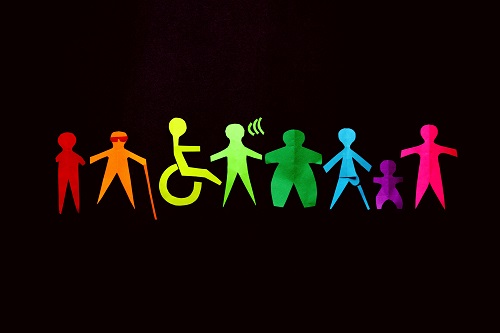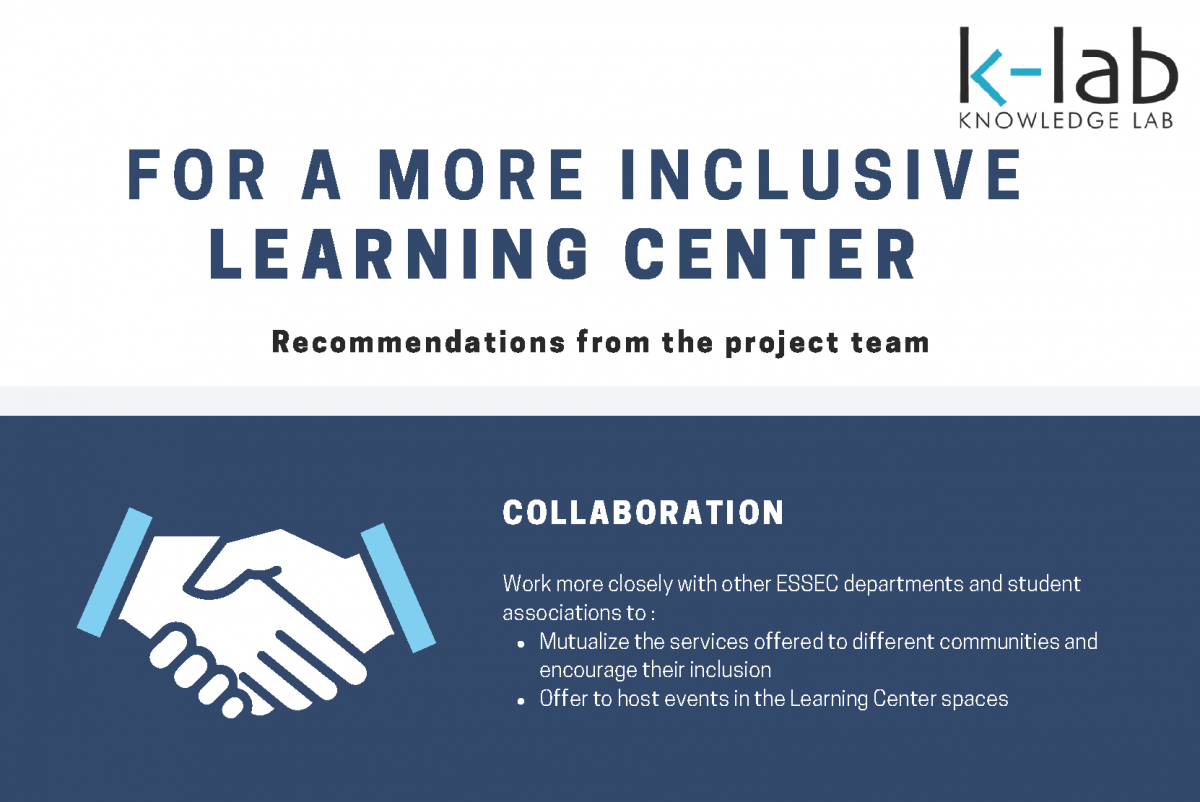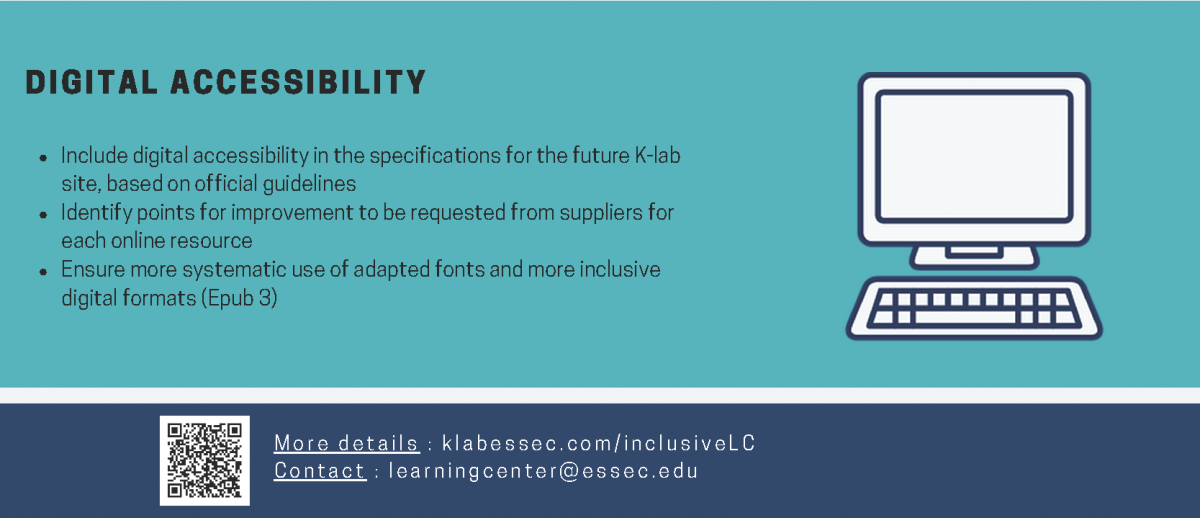Recommendations for a more inclusive Learning Center

Last year, a project group of 4 librarians and documentalists worked on the question "How can we make the Learning Center more inclusive?". After defining inclusion, meeting the many stakeholders involved in inclusion at ESSEC, and listing the areas in which the Learning Center was already inclusive, recommendations were drafted. You can find them summarized in the infographic below.
For more details, the full document is available here:









